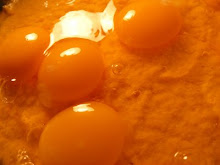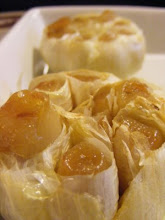For most non-professional cooks, stock production is a bit of a mystery. Once the veil is removed, however, stocks are pretty simple. Just think of making a stock in the same way as you would in making a cup of tea. Both are infusions where flavor is extracted by adding water to something which contains flavors that are locked away. Water is the means of releasing those flavors.
As far as stocks are concerned, bones are used to add flavor to the water, unless a vegetable stock is being produced in which case vegetables alone would be used. In any case, bones are usually roasted until browned and then roasted vegetables are added. Everything is thrown into a pot with water, wine and herbs and allowed to cook for a few hours at a slow simmer.
When the stock is ready, it is poured off of the bones and is ready to use. Think of that as though removing the tea bag from the tea. It isn't really rocket science!

Here we have raw veal bones in a roasting pan ready for the oven.

Here, the bones are about half way roasted. They are golden brown and full of flavor as the sugars have caramelized and are waiting to be infused into liquid.

Some tomato paste is smeared over the bones and will brown in the oven to add additional flavor.

The bones are ready for the stock pot!

That's one BIG stock pot!!

The bones in the stock pot waiting to be simmered off.
 Mirepoix
Mirepoix freshly cut! This is a blend of onion, carrot, celery, leek and garlic; the classic French vegetable blend used for so many things in French cooking.

The mirepoix is roasted and ready for the stock pot!

The mirepoix is added to the bones in the stock pot and everything is covered with water and wine. It is allowed to cook at a very low simmer for 12 - 16 hours!

The stock is poured off and is run through a strainer.

Straining the stock!

The finished stock. In this case I added a fresh mirepoix and more wine (3 bottles) and reduced this down to a demi glace. However, at this point the stock can be used for broths and soups.

Here you see the stock (on the left) with fresh mirepoix which will simmer down for about 12 hours to become a super-concentrated demi for fine pan sauces. The reboil (on the right) has a fresh mirepoix plus all of the bones that were boiled for the stock. I will simmer this over night again and extract every last bit of flavor out of it for a remouillage, or, a second boil. This will be reduced also and used to enhance other sauces.












































































































